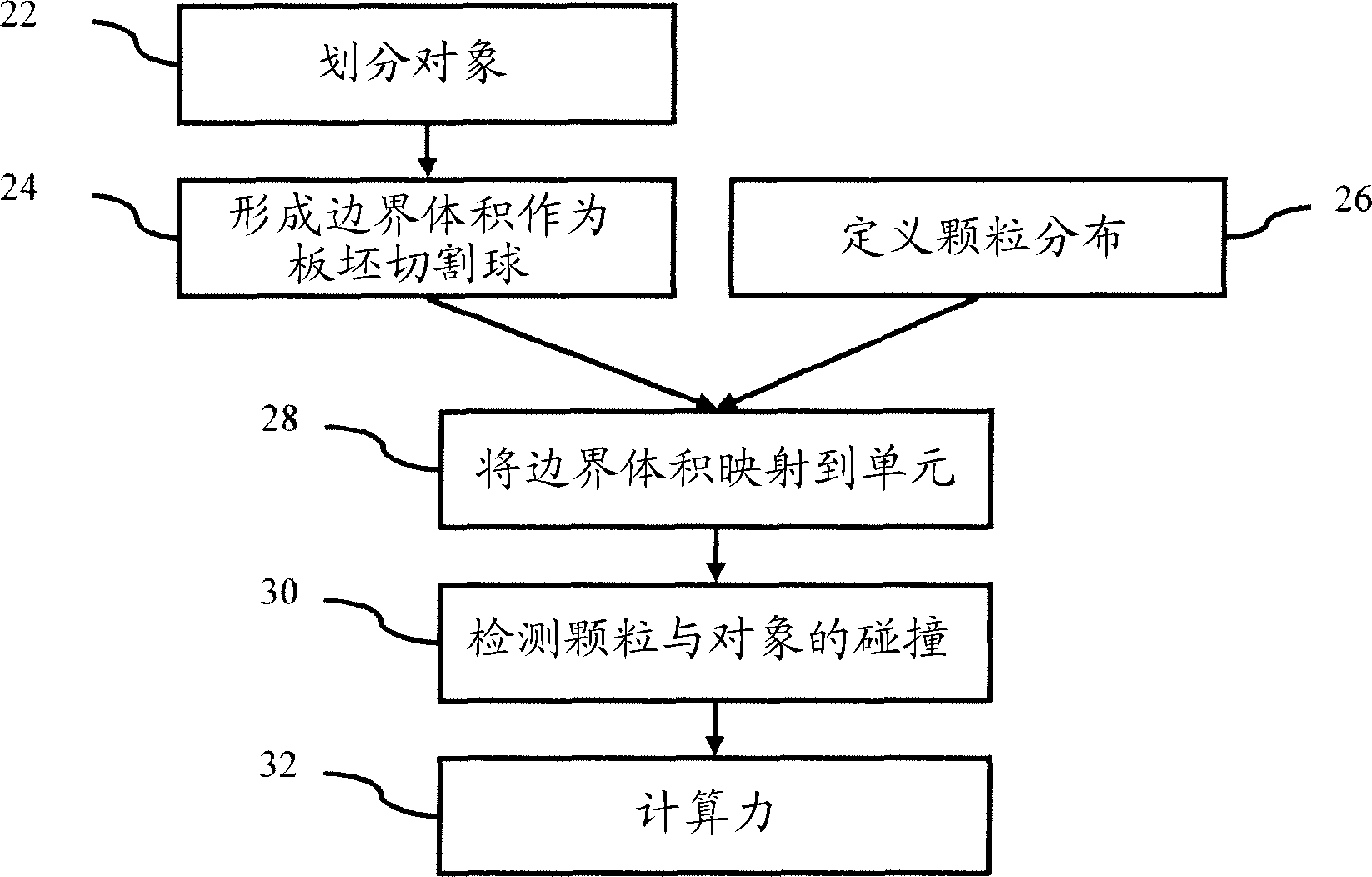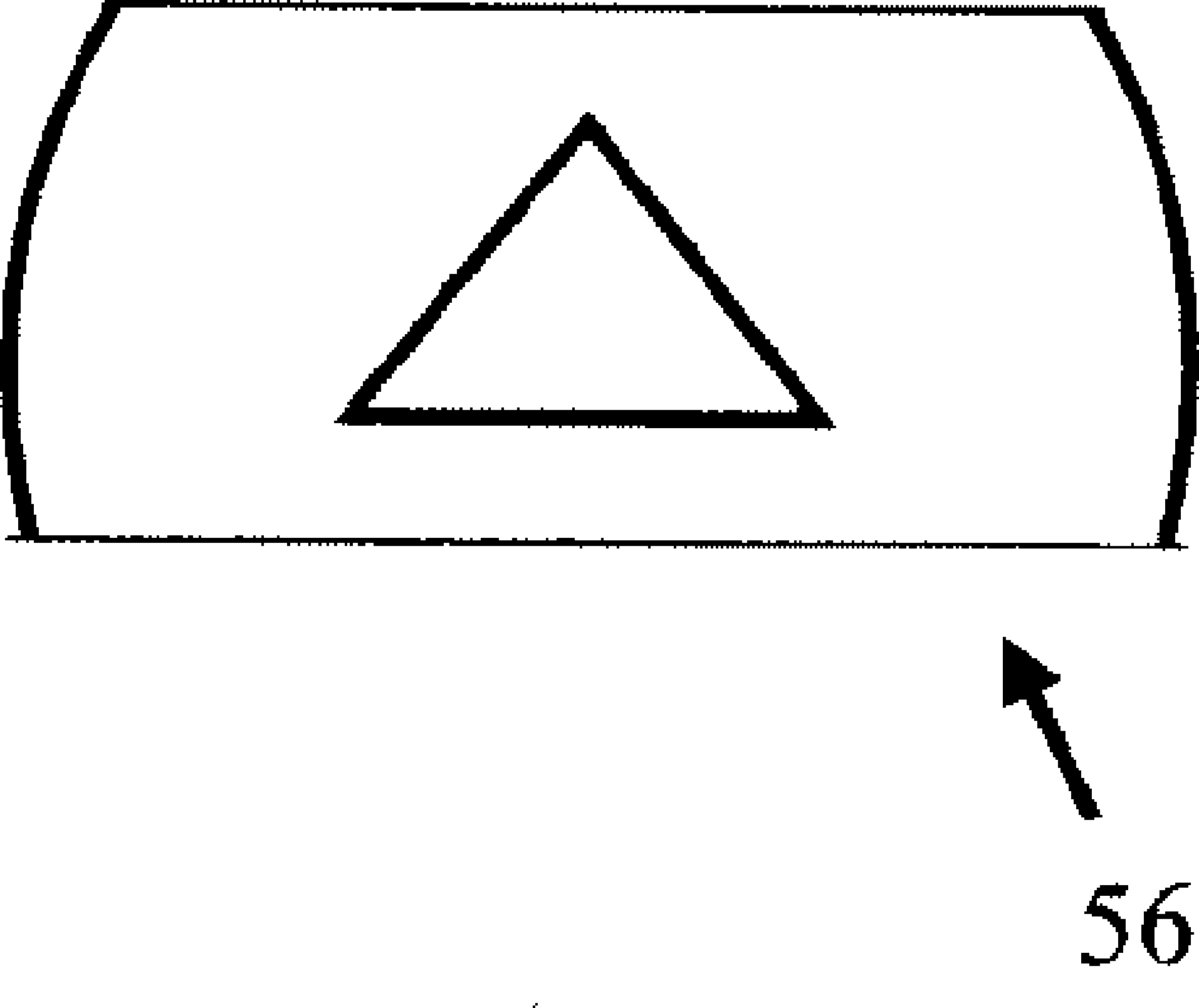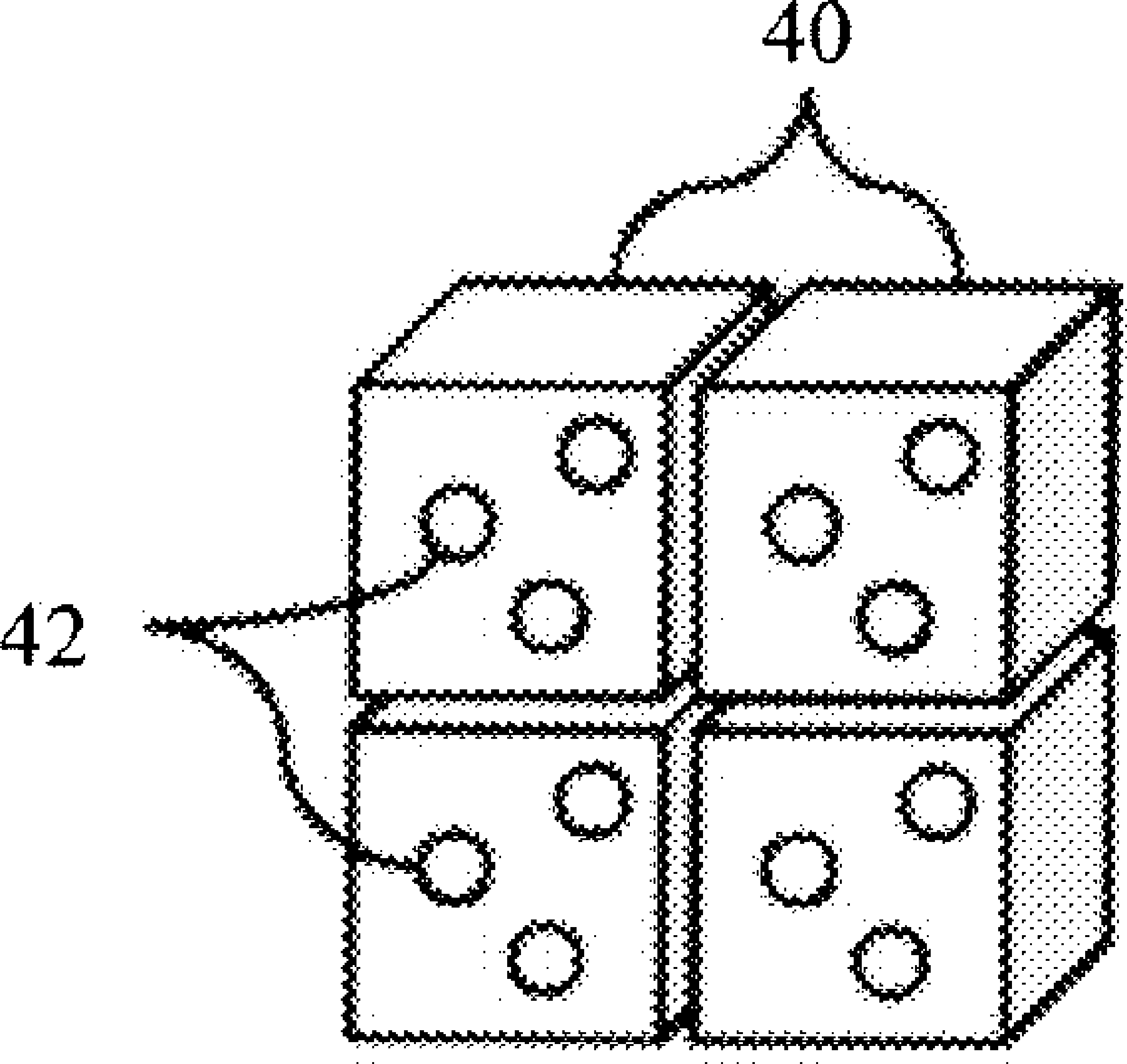Boundary handling for particle-based simulation
A boundary processing and particle technology, applied in image data processing, electrical digital data processing, special data processing applications, etc., can solve problems such as computational cost
- Summary
- Abstract
- Description
- Claims
- Application Information
AI Technical Summary
Problems solved by technology
Method used
Image
Examples
Embodiment Construction
[0020] Particle-based fluid simulation methods such as Smoothed Particle Hydrodynamics (SPH) can be used to implement interactive fluid simulations. To provide simulations with bodies within fluids and maintain interaction speed, fast boundary handling is provided to couple particle-based fluid simulations with other bodies. To be interactive, the simulation is generally updated on a loop basis in milliseconds. Therefore, the calculation of the fluid interaction with the boundary is done efficiently to maintain the interaction speed. Slab cut spheres can be used to provide an efficient method to handle large, complex and movable solid objects at interactive speed. The ease of computing and updating the mapping between solid objects and fluid particles results in only particles in the vicinity of the solid surface being tested for collisions.
[0021] The goal is to efficiently map between fluid particles and solid object primitives at each simulation step. Use the slab cut ...
PUM
 Login to View More
Login to View More Abstract
Description
Claims
Application Information
 Login to View More
Login to View More - R&D
- Intellectual Property
- Life Sciences
- Materials
- Tech Scout
- Unparalleled Data Quality
- Higher Quality Content
- 60% Fewer Hallucinations
Browse by: Latest US Patents, China's latest patents, Technical Efficacy Thesaurus, Application Domain, Technology Topic, Popular Technical Reports.
© 2025 PatSnap. All rights reserved.Legal|Privacy policy|Modern Slavery Act Transparency Statement|Sitemap|About US| Contact US: help@patsnap.com



